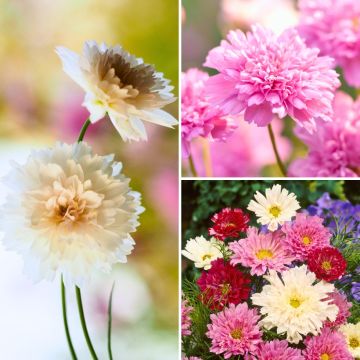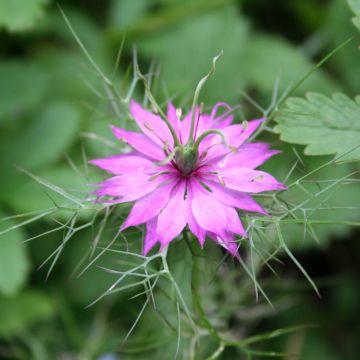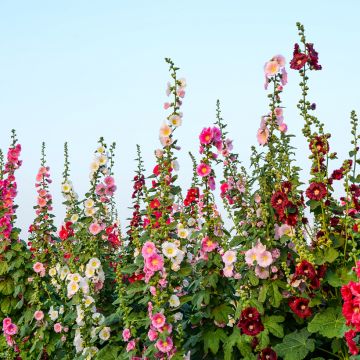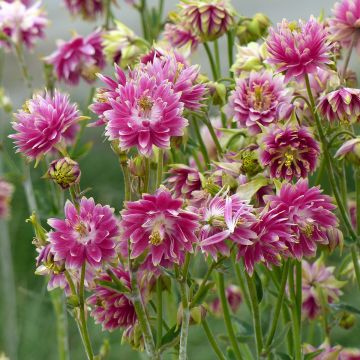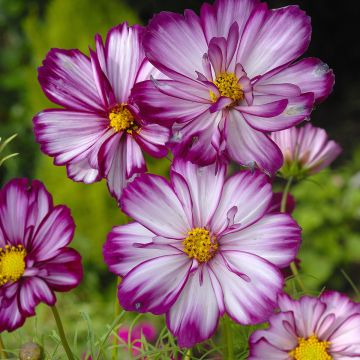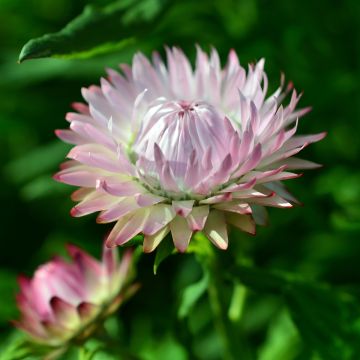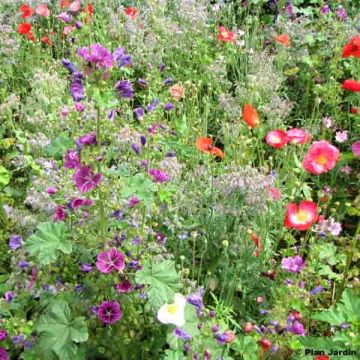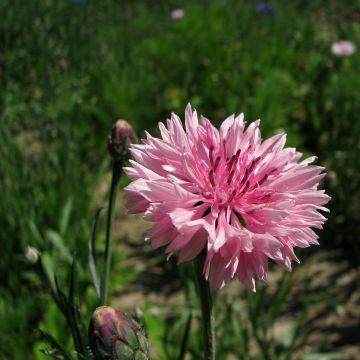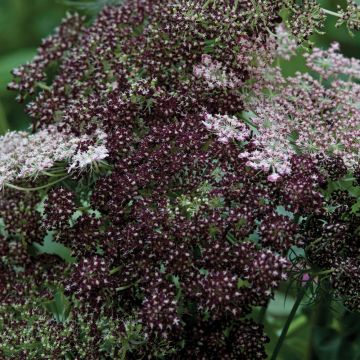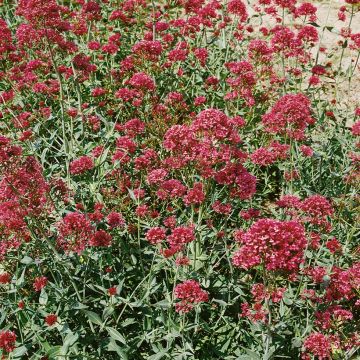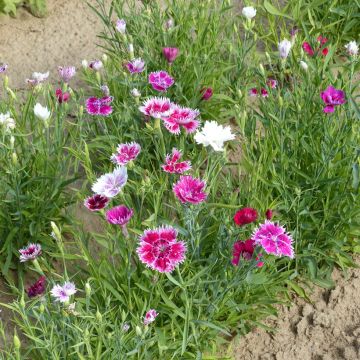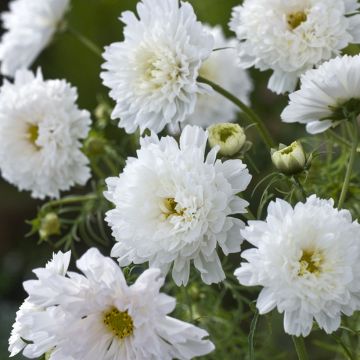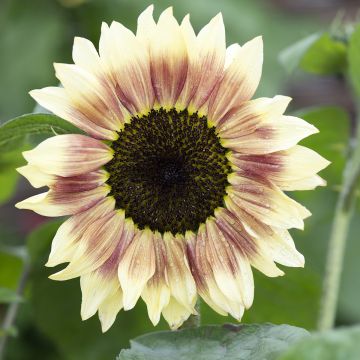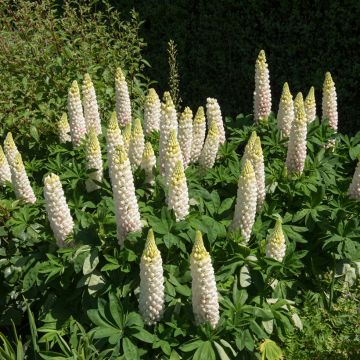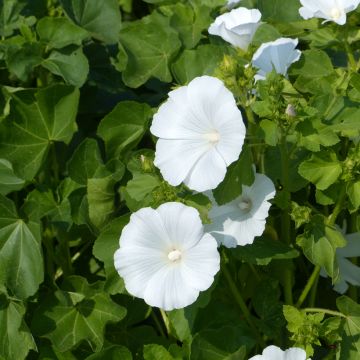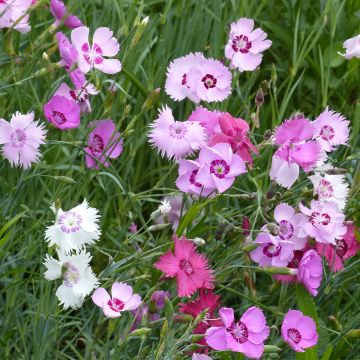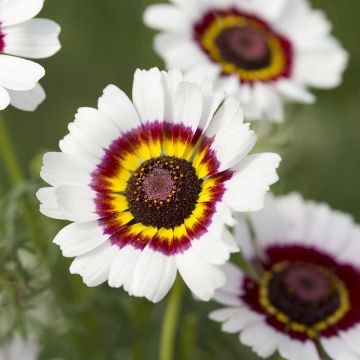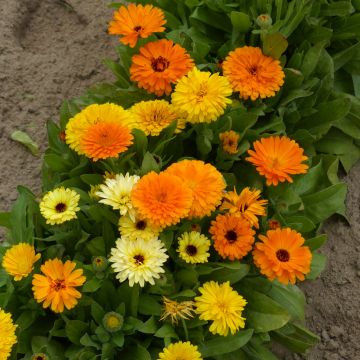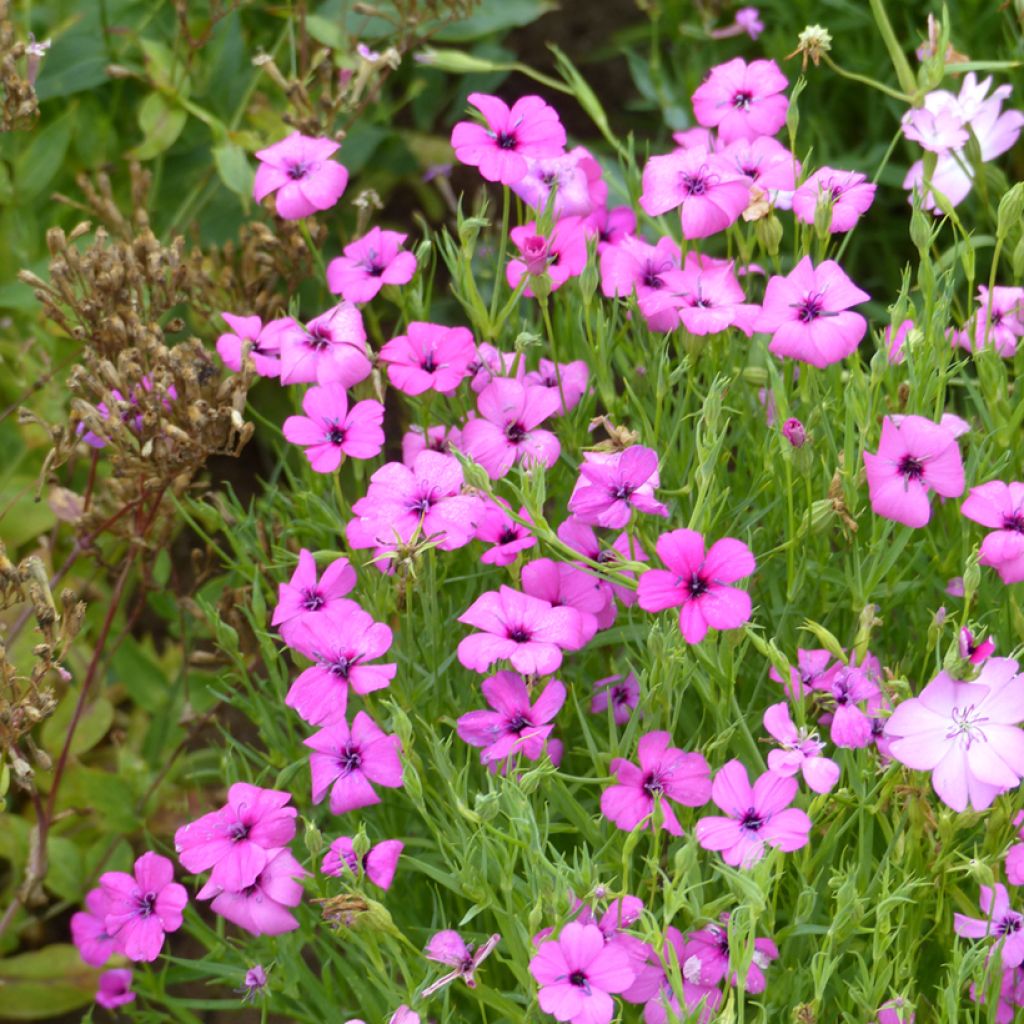

Silene oculata Rose Angel seeds
Silene oculata Rose Angel seeds
Silene oculata Rose Angel
Campion
Why not try an alternative variety in stock?
View all →This plant carries a 6 months recovery warranty
More information
We guarantee the quality of our plants for a full growing cycle, and will replace at our expense any plant that fails to recover under normal climatic and planting conditions.
From €5.90 for pickup delivery and €6.90 for home delivery
Express home delivery from €8.90.
Does this plant fit my garden?
Set up your Plantfit profile →
Description
Silene oculata 'Rose Angel', also known as “rose campion”, is a floriferous annual plant prized for its small pink flowers dancing in the wind, in borders, rockeries, and containers. It is perfect for adding a touch of soft colour in the garden throughout the summer, requiring minimal maintenance. Sow directly in place, in full sun, in fertile, well-drained soil.
Silene oculata is an herbaceous annual plant with a slender silhouette, fast growth, originating from the temperate regions of Europe and Western Asia. It belongs to the Caryophyllaceae family, just like pinks. The cultivar, 'Rose Angel', is a horticultural selection with abundant flowering and a compact size. The plant forms upright clumps reaching around 40 cm in height. Its stems are thin and slightly swaying, bearing small pink flowers (1.5 to 2 cm in diameter), which bloom continuously from June to September. The flowers consist of five petals cut into lobes, with occasional lighter shades at the centre. This flowering attracts numerous pollinators. The foliage is lanceolate and light green.
Silene oculata 'Rose Angel' is easily used in borders, beds, or containers. Its light habit and delicate flowers blend easily with many garden plants. For harmonious combinations, pair it with pink-flowered bushy salvias, gauras, cosmos 'Sensation Pinkie', or Nepetas, all preferring a sunny exposure and well-drained soil. This silene, with its light stems and delicate flowers, is also perfect for creating rustic bouquets, with white or lilac pincushions and Ammi majus 'Queen of Africa', for example.
Report an error about the product description
Flowering
Foliage
Plant habit
Botanical data
Silene
oculata
Rose Angel
Caryophyllaceae
Campion
Silene coronaria (Oculata Group)
Cultivar or hybrid
Other Flower seeds
Planting and care
Sowing Silene oculata 'Rose Angel' seeds is quite simple. Sow the seeds on the surface in spring, as soon as the risk of frost has passed, or start indoors 6 to 8 weeks before the last frost. Germination occurs at a temperature between 15 and 21°C, usually within 10 to 20 days. If sowing directly in the ground, make sure to space the young plants 15 to 20 cm apart to allow for proper development. It is recommended not to cover the seeds with soil as they need light to germinate. Water gently to keep the substrate moist without excess.
Silene oculata 'Rose Angel' enjoys sunny exposures but can tolerate some partial shade. It thrives in light, well-drained soils and can withstand slightly dry conditions once established. If your soil is heavy, you can lighten it with coarse sand and compost to promote good drainage. The plant is fairly drought-resistant in summer, but moderate watering is necessary in case of prolonged spring drought.
Sowing period
Intended location
This item has not been reviewed yet - be the first to leave a review about it.
Haven't found what you were looking for?
Hardiness is the lowest winter temperature a plant can endure without suffering serious damage or even dying. However, hardiness is affected by location (a sheltered area, such as a patio), protection (winter cover) and soil type (hardiness is improved by well-drained soil).

Photo Sharing Terms & Conditions
In order to encourage gardeners to interact and share their experiences, Promesse de fleurs offers various media enabling content to be uploaded onto its Site - in particular via the ‘Photo sharing’ module.
The User agrees to refrain from:
- Posting any content that is illegal, prejudicial, insulting, racist, inciteful to hatred, revisionist, contrary to public decency, that infringes on privacy or on the privacy rights of third parties, in particular the publicity rights of persons and goods, intellectual property rights, or the right to privacy.
- Submitting content on behalf of a third party;
- Impersonate the identity of a third party and/or publish any personal information about a third party;
In general, the User undertakes to refrain from any unethical behaviour.
All Content (in particular text, comments, files, images, photos, videos, creative works, etc.), which may be subject to property or intellectual property rights, image or other private rights, shall remain the property of the User, subject to the limited rights granted by the terms of the licence granted by Promesse de fleurs as stated below. Users are at liberty to publish or not to publish such Content on the Site, notably via the ‘Photo Sharing’ facility, and accept that this Content shall be made public and freely accessible, notably on the Internet.
Users further acknowledge, undertake to have ,and guarantee that they hold all necessary rights and permissions to publish such material on the Site, in particular with regard to the legislation in force pertaining to any privacy, property, intellectual property, image, or contractual rights, or rights of any other nature. By publishing such Content on the Site, Users acknowledge accepting full liability as publishers of the Content within the meaning of the law, and grant Promesse de fleurs, free of charge, an inclusive, worldwide licence for the said Content for the entire duration of its publication, including all reproduction, representation, up/downloading, displaying, performing, transmission, and storage rights.
Users also grant permission for their name to be linked to the Content and accept that this link may not always be made available.
By engaging in posting material, Users consent to their Content becoming automatically accessible on the Internet, in particular on other sites and/or blogs and/or web pages of the Promesse de fleurs site, including in particular social pages and the Promesse de fleurs catalogue.
Users may secure the removal of entrusted content free of charge by issuing a simple request via our contact form.
The flowering period indicated on our website applies to countries and regions located in USDA zone 8 (France, the United Kingdom, Ireland, the Netherlands, etc.)
It will vary according to where you live:
- In zones 9 to 10 (Italy, Spain, Greece, etc.), flowering will occur about 2 to 4 weeks earlier.
- In zones 6 to 7 (Germany, Poland, Slovenia, and lower mountainous regions), flowering will be delayed by 2 to 3 weeks.
- In zone 5 (Central Europe, Scandinavia), blooming will be delayed by 3 to 5 weeks.
In temperate climates, pruning of spring-flowering shrubs (forsythia, spireas, etc.) should be done just after flowering.
Pruning of summer-flowering shrubs (Indian Lilac, Perovskia, etc.) can be done in winter or spring.
In cold regions as well as with frost-sensitive plants, avoid pruning too early when severe frosts may still occur.
The planting period indicated on our website applies to countries and regions located in USDA zone 8 (France, United Kingdom, Ireland, Netherlands).
It will vary according to where you live:
- In Mediterranean zones (Marseille, Madrid, Milan, etc.), autumn and winter are the best planting periods.
- In continental zones (Strasbourg, Munich, Vienna, etc.), delay planting by 2 to 3 weeks in spring and bring it forward by 2 to 4 weeks in autumn.
- In mountainous regions (the Alps, Pyrenees, Carpathians, etc.), it is best to plant in late spring (May-June) or late summer (August-September).
The harvesting period indicated on our website applies to countries and regions in USDA zone 8 (France, England, Ireland, the Netherlands).
In colder areas (Scandinavia, Poland, Austria...) fruit and vegetable harvests are likely to be delayed by 3-4 weeks.
In warmer areas (Italy, Spain, Greece, etc.), harvesting will probably take place earlier, depending on weather conditions.
The sowing periods indicated on our website apply to countries and regions within USDA Zone 8 (France, UK, Ireland, Netherlands).
In colder areas (Scandinavia, Poland, Austria...), delay any outdoor sowing by 3-4 weeks, or sow under glass.
In warmer climes (Italy, Spain, Greece, etc.), bring outdoor sowing forward by a few weeks.

































